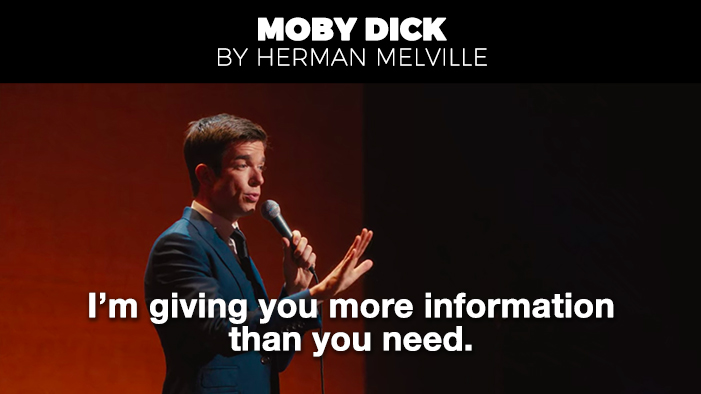People screamed or squawked in fear. Those nearby scrambled to get out of the way. Three more young men roared in excitement and gestured wildly. Then, somehow, a second dispute broke out between two of these three—probably because one inadvertently touched or hit the other.
As the second fight scattered frightened passengers, a woman shook the driver’s shoulder and grunted as she gestured toward the fighting.
The driver grunted back through bared teeth. Frightened, the woman drew away.
Early in the story, two men begin fighting on the bus. The language Butler uses to describe passengers’ reactions evokes the way animals communicate. The verbs squawked, roared, and grunted name the sounds animals make. The word grunt in particular is used here and elsewhere in the story to describe the wordless sound that men, especially, make. In addition, when the bus driver grunts after the woman appeals to him, wordlessly, to do something about the fight, he does so “through bared teeth,” as an animal would when snarling to drive a threat away or to assert dominance. Yet these people, whose linguistic and intellectual impairments have forced them to communicate in animalistic ways, are armed not with claws and fangs but with guns and cars.
As they passed blocks of burned, abandoned buildings, empty lots, and wrecked or stripped cars, he slipped a gold chain over his head and handed it to her.
. . . .
She knew the relative positions of the two cities, knew streets, directions, even knew to stay away from freeways, which might be blocked by wrecked cars and destroyed overpasses.
These lines occur during the scene in which Obsidian and Rye drive away from the bus, with its crowd of angry passengers. In passing, in an almost matter-of-fact tone, Butler describes the cityscape of Los Angeles, which readers can assume is representative of cities around the world after the pandemic. That the tone is matter of fact suggests that the destruction of LA has been the reality of Rye and Obsidian’s world long enough to be expected and normalized. Both have already learned to navigate the “downtown canyons” of the wrecked city, now home to backyard gardens and rabbit hutches. Even seemingly sturdy structures, such as freeway overpasses, have been “destroyed,” a word that indicates action leading to their ruin, not collapse over time. In rage, fear, grief, or greed, people have destroyed the city. Its ruin is not the result of an earthquake or flood, natural forces that operate without motivation.
Two young men were involved in a disagreement of some kind, or, more likely, a misunderstanding. They stood in the aisle, grunting and gesturing at each other, each in his own uncertain T stance as the bus lurched over the potholes. The driver seemed to be putting some effort into keeping them off balance. Still, their gestures stopped just short of contact—mock punches, hand games of intimidation to replace lost curses.
People watched the pair, then looked at one another and made small anxious sounds. Two children whimpered.
The postures and gestures described in these lines, which occur in the story’s first scene, demonstrate how characters have resorted to metonymical language to communicate. Body language, which in a normal world often complements spoken language, in this dystopian setting must do all the work of words. The “hand games of intimidation” stand in for the “fighting words” the men want to say. Rye perceives the problem between the men as a “misunderstanding,” suggesting the limits of body language to communicate clearly. Even with language to back it up, a gesture or posture is easy to misinterpret. As Rye notes, “[t]hese things could happen anytime” in post-pandemic Los Angeles.
The noises that characters make are also metonymical. When true speech sounds are absent, “small anxious sounds” such as whimpers and grunts must convey what people think. It is as if, without language, people are reduced to preverbal children. These metonymical “utterances” communicate something of what people think, but the impaired reasoning that many characters suffer further limits communication. This is why, when it becomes clear to the passengers that Obsidian and Rye communicate more effectively and thoroughly than they can, she cuts off their conversation. Less impaired people elicit rage in those whose ability to understand metonymical communication is more limited.
She had told herself that the children growing up now were to be pitied. They would run through the downtown canyons with no real memory of what the buildings had been or even how they had come to be. Today’s children gathered books as well as wood to be burned as fuel. They ran through the streets chasing one another and hooting like chimpanzees. They had no future. They were now all they would ever be.
After she conveys to Obsidian that her three children died during the pandemic, Rye tries to stop the “flood of memories” that thinking of her children brings. As part of her grief over their deaths, Rye has rationalized that death was the better alternative for them. Children growing up in the post-pandemic world are not, and cannot be, fully human because they don’t have language. They will only ever be “like chimpanzees,” even if they survive. They won’t understand human creations that rely on language—buildings that require plans and collaboration mediated by language to be built or books, which are now so much firewood, the paper on which they are printed burned like any lumber. These lines also prepare readers for the surprise of the story’s ending. Having found two children who can speak, Rye can now envision a future for children and for humanity because language has not been entirely lost. The world of writing, speaking, and reading humans can be revived.


 payment page
payment page



